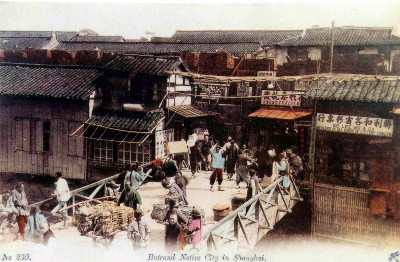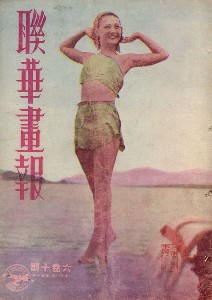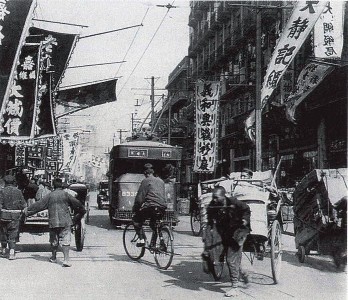> Accueil
The present workshop is part of a series of meetings held over the years on the issue of history and the use of visual documents. This initiative taken by Prof. Yeh Wen-hsin (History Department, UC Berkeley) and Prof. Christian Henriot (Institut d'Asie Orientale, Lyon 2 University) followed their initial involvement in the creation of a databank of historical photographs of Shanghai funded by the France-Berkeley Fund.

The series started in May 2003 with an exploratory workshop on "Visual Documents in the Study of Modern China" at the University of California at Berkeley. This was followed by four more workshops, one in Tokyo in September 2004 on « Representations of the Body in China and Japan », one in May 2005 as part of the ECAI meeting at Fudan University in Shanghai.
These workshops paved the way toward a more systematic exploration and use of visual materials in the study of modern China. To build on these previous meetings, we initiated a new cycle of workshops to address more thoroughly a few selected topics. The first workshop in this new cycle was held in Berkeley in August 2006. It dealt with the issue of “War and warfare”, especially the Chinese War of Resistance as documented in photographs and other pictorial images, but also other incidents of armed conflicts and sanctioned violence. In June 2007, another workshop was held on « History in Images, History through Images : Entertainment, media and the Public Space ». An edited volume is currently being edited on the basis of these two meetings.

The October 2009 workshop will encourage participants to tackle a bit more issues of methodology and narrative. Its broad theme -- Visual, Representations, Materiality and Narratives -- however is meant to suggest an open exploration of the various dimensions visual sources entail for historical knowledge. The historical discipline is rooted in the careful analysis of textual documents through elaborate methods crafted by generations of historians. The pre-eminence of the written world has found its manifestation in the reliance on archives as the primary material of the historian. These foundations have been shaken by post-modern critics who argued that archives were like all other historical documents, a form of narrative that offered no more guarantee of objectivity than other productions such as the press or even literary texts. This challenge has redefined the way historians ‘think’ and mobilize their sources in the reconstruction of the past.
The almost exclusive attention given to words and texts has led historians to neglect, underuse and sometimes dismiss other types of documents. Images in their variety of forms (paintings, photographs, posters, etc.) are precisely such a source that remained at the margin of historical inquiry. Generally, images have been used to illustrate a text, a mere addition or even a concession to the master narrative carried by the word. Very rarely have images become a central piece of the information data of the historian. This is especially true in the field of Chinese history where images have been relegated to the rank of an unknown quantity. Images have not become part of the regular arsenal of the historians who by and large have belittled images as less ‘serious’ than textual records.
Basically a major challenge revolves around how visual document can be harnessed into expressing an argument in the same way as historians represent the past as multidimensional, complex and nonlinear, even if structurally their prose and their logic is sequential and linear. Visual sources do present a methodological and epistemological challenge, but this should not dismiss them from offering as much potential in presenting an alternative reconstruction of the past. If historical understanding is “like a vision, an evocation of images,” as Huizinga puts it, how do visions and images enter historical thinking?

Photography and film have contributed enormously to shape our understanding of history. The widespread and increasingly rapid circulation of images gave birth to new patterns considering what to see, how to see, how to be seen and where to be seen. The global movement towards the visual and the ensuing reshaping of perception, as well as the role of technological innovations, new mass markets for visual products and the development of a modern global language regarding the content and message contained within these visual images, have become key research issues because these developments not only supplement but reshape inherited notions of cultural and material history.
The study of visual documents goes beyond the field of history, of course. It is a complex field that takes all forms of visual production and representation as its targets of investigation. The production and circulation of visual documents generate for any given period a particular visual culture that sets the environment within which individual documents (whatever their nature) has to be approached. Who does what and when and how does it become visual, in what historical relations do specific images stand to others, what is the social life of an image, what is the relationship between a social actor and the image? Thus the visual offers itself as both material and representational. It is to understand this duality and its implications and to find answers to these types of questions that scholars will get together at the 2009 workshop on history & images.
Dernière modification : 17 April 2009, 04:16 PM